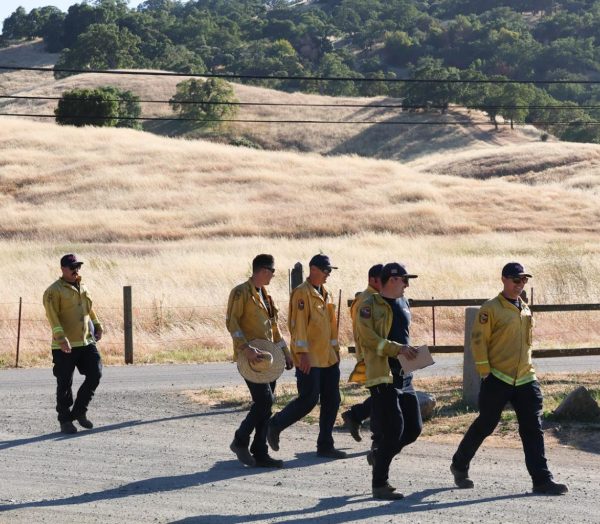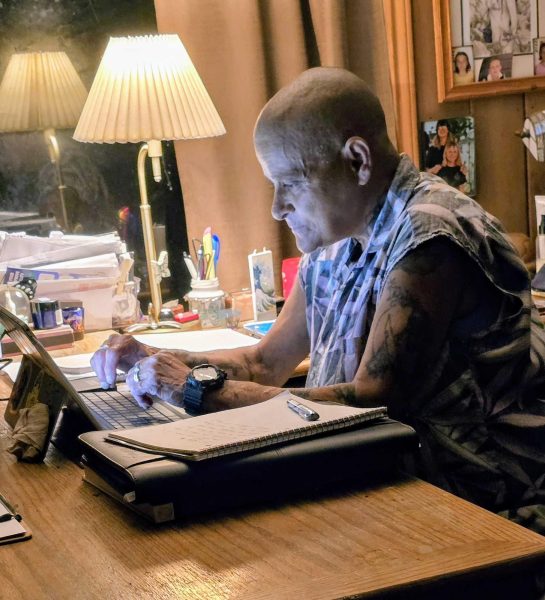‘Monster: The Jeffrey Dahmer Series’ is a controversial piece of remembering horror and creating entertainment
November 3, 2022
If you are anything like most Netflix users, you can sometimes spend more time mindlessly scrolling for something new to watch than actually watching. In the event that you’ve scrolled recently, say as recent as Sept. 21, you might have noticed Ryan Murphy and Ian Brennan’s newest psychopathic thriller series, “Monster: The Jeffrey Dahmer Series.”
The ominous headshot of Jeffery Damher is the cover of this spine-chilling series which follows the true accounts of Dahmer, the man turned killer notorious for the deaths, disembodiments, rape and cannibalism of 17 men and boys. Sounds like the perfect Friday night Netflix and chill, doesn’t it?
Earning its way to Netflix’s “Top 10” with over 701.31 million viewing hours, the series follows the monster played by a very bleached-blond Evan Peters from times of adolescence to adulthood, showing the influences of how Dahmer ended up in such an unfortunate state of mind.
Peters, who is no stranger to horror with prominent roles in shows like “American Horror Story,” gracefully exudes an air of suspense from the opening scene. Bloody hands cleaning an equally dripping red butchers knife in his kitchen sink.
One mustn’t mistake this blood from being part of a juicy steak, unless it is human.
The gore and horror seamlessly transcend throughout the 10 episodes, each one building on the next, heightening the viewer’s worst fears. The series uses techniques of dim lighting in Dahmer’s apartment complex to foreshadow murders, a symphony of eerie music and power tools with the occasional scream and the everpresent airvent connecting Dahmer’s room full of a flesh-rotting stench to his neighbors.
The show’s pacing makes it so it is hard to expect what is next. At one moment we see Dahmer in prison confessing his sins, in the next moment we watch how diabolical plans of lust turn into fridge-chilled severed heads. And sometimes in contrast we sometimes see young Dahmer, isolated and neglected, just needing a hug.
These powerfully angst producing scenes are part of the series’ greatest controversy. Should such a story, a true story at that, be used for the entertainment of others?
With constant flashbacks and flashforwards taking us on a rollercoaster of emotions, one can get completely lost in the show, forgetting that there was real victims and families terrorized by such an evil man.
Adding to the piling controversy, this scary series would not and will not end for the victims’ families, it is a living nightmare that they can’t pause or quit watching when the tragedy becomes too much to bear.
In most instances, Netflix didn’t ask the victims’ families for consent to use their names or stories. In an interview with Insider, Rita Isbell, the sister of victim Errol Lindsey, said, “I was never contacted about the show. I feel like Netflix should’ve asked if we mind or how we felt about making it. They didn’t ask me anything. They just did it.”
Nexflix claims that they are honoring the victims’ lives by telling their stories, a chance to give Dahmer’s mainly gay and African American victims a voice. However, in this context it wouldn’t be fitting to consider it honoring as it would be sadistic.
Is it right to make entertainment out of another’s pain and discomfort? Netflix certainly does as it sees money signs from “Monster” and a plethora of upcoming serial killer series and documentaries.
As “Monster” remains the exemplar of all successful horror series, we as viewers should think twice about the effect they have on our minds and the hearts of others.
For a first timer of fright-fueled cinema, “Monster” was an intriguingly unnerving piece of American history that viewers won’t be forgetting anytime soon. It’s up to you if that’s bad or good.
But for now, I’ll be sleeping with the light on.
Rating: 4 out of 5 stars


























